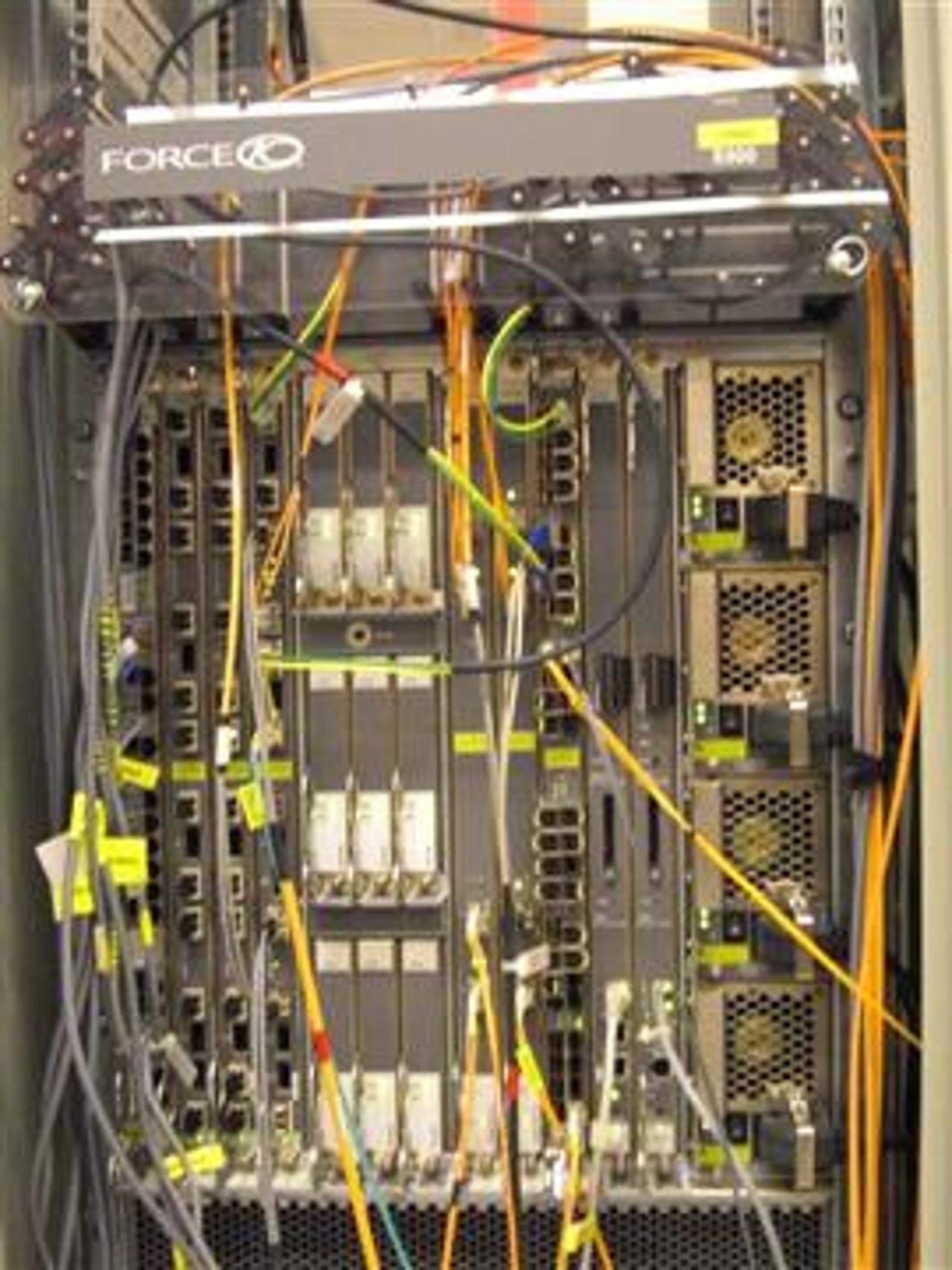Photos: Supercomputers signal when storms are a-brewing

Keeping one step ahead of mother nature
Tucked away in Reading, the European Centre for Medium Range Weather Forecasts (ECMWF) is using technology to map the weather across the world for up to 15 days ahead and provide forecasts for about 30 European countries, including the UK.
Medium range forecasts are sent out twice a day to the National Meteorological Services of ECMWF members and co-operating states, including the Met Office, to complement their national forecasts.
About 300 million pieces of information flow into the centre from a network of satellites, ships, aircraft, buoys and weather balloons every day. Here is a satellite image showing a storm brewing over the Atlantic.
ECMWF receives and sends out data using the Regional Meteorological Data Communications Network and is connected to 42 sites in 41 countries.
Photo credit: Nick Heath
ECMWF's two IBM supercomputers chew up more than 20 million bits of climate data every day to produce their predictions.
The centre constantly feeds air pressure, temperature, wind speed and other data into its machines to generate its virtual model of the atmosphere.
Some of the reams of daily data, which generates about 500 million numbers every 12 hours, can be seen here on charts showing air pressure and temperature.
Since it started in 1975 ECMWF's climate model has evolved from simply simulating atmospheric data to recreating its interaction with animals and plants, land, ocean and ice.
As computing power burgeoned and satellite data has improved predictions have steadily increased in accuracy over the decades, with seven-day forecasts in Europe today having a better hit rate than five day forecasts in the early 1980s.
Global forecasts are sent out twice a day to the National Meteorological Services of ECMWF member and co-operating states, including the Met Office.
Photo credit: Nick Heath
The current identical IBM supercomputer 1600 clusters, one of which is pictured in the foreground, are made up of 5,000 processors and capable of running at 38 teraflops, with a sustained output of four teraflops. Each of the clusters is based on a 155 IBM pSeries p5-575+.
Photo credit: Nick Heath
The ECMWF upgrades its supercomputers every two to three years to allow it to continually hone its medium range forecasting models.
Its high performance computers already impressive performance will leap forward by the end of the year when the centre completes the installation of a new system, seen being built here, capable of 20 teraflops sustained performance.
Didier Garçon, network analyst at the ECMWF, said: "Even if the computers were 10 times more powerful we could probably fill their computing power. The computers are usually lagging behind the ideas."
From 2011 it will install a system 10 to 12.5 times more powerful than the existing computer and by 2015 it will have a machine capable of between 150 and 200 teraflops.
Photo credit: Nick Heath
Hot air blasts through the grilles of the supercomputers like a hot air dryer, meaning the centre relies on some heavy duty cooling.
Throbbing cooling towers stretch from the floor to the high ceiling in the computer hall to keep the temperature at a constant 17.9 degrees Celsius.
New water cooling technologies that will be fitted alongside the new computers mean that in future very little of the heat will remain in the computer hall.
Photo credit: Nick Heath
The ECMWF stores climate information and forecasts going back to about 1980, totalling six petabytes of data crammed onto 10,000 magnetic tapes.
More than 1,000 researchers from more than 300 different organisations access this meteorological archive for their work.
A robot arm is able to retrieve requested data in seconds, whizzing around data silos plucking out tapes and copying the data into the system.
Vastly improved data density means the tapes hold far more information today, letting the centre replace its library full of tapes with just five data silos.
ECMWF uses its three decades of climate data to refine the world's weather forecasting and climate models.
Its "reanalysis" of this data has helped groups such as the Intergovernmental Panel on Climate Change (IPCC) better model global climate change and also helped further understanding of severe weather events such as hurricanes.
Remote users gain secure access to ECMWF's systems using a solution developed by ActivIdentity and Sysec.
Photo credit: Nick Heath

Here are the mass of connections that link up the systems in the centre through its 10GB high performance network.
Photo credit: Nick Heath
In order to replicate the uncertainty of atmospheric systems ECMWF uses a scatter-gun approach called the Ensemble Prediction System.
Simply put, it runs 51 simulations, slightly varying the starting point of each forecast, to produce a range of results that show the most probable weather fronts and where they are most likely to strike, as represented in this chart here.
Its global forecasts saves lives by helping humanitarian agencies such as the UN's Food and Agricultural Organisation predict and prepare for severe droughts, excessive rainfall or outbreaks of diseases such as malaria.
Its data is even used to enforce the Comprehensive Nuclear Test Ban Treaty, allowing radioactive particles to be traced back to their country of origin using wind patterns.
Photo credit: Nick Heath
The banks of screens in the operations room allow operators to track the terabytes of data and thousands of operations on its supercomputers each day.
Green, amber, red and blue branches represent the flow of information and processes through the centre's systems at a glance.
It allows operators to prioritise and swiftly rectify any problems with job requests, submitted from within and outside the centre.
From here staff can also monitor the performance of its internal networks and its links to its members.
Photo credit: Nick Heath